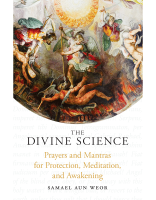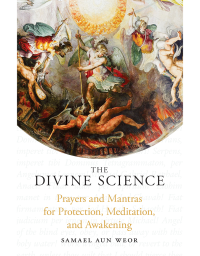The fundamental basis of all religions is that the divine exists and can be experienced, and it is this notion that you will find emphasized throughout the teachings of Gnosis. Mere belief cannot create anything in life, only action can, and it is here that we must begin our spiritual development: through conscious action, within. This leads us to the very meaning of the word Gnosis: personal knowledge acquired through experience. The true Gnostic does not believe, he knows because he has experienced it. Samael Aun Weor taught and wrote from experience, and expressly demanded that belief and theory be set aside so that the consciousness be free of any restrictions in its effort to reunite with its divine source.
Throughout his more than seventy books, Samael Aun Weor provided an incredible array of practical techniques to aid the serious spiritual devotee to awaken their consciousness. His mission to put the tools in our hands is perhaps most evident in this collection of books, notably Logos Mantra Theurgy. The work to develop the consciousness is the greatest and most worthy endeavor in life, and it is also the most difficult. In this book you will find a priceless collection of tools and armaments to aid you in your journey.
These writings are worthless if merely contemplated or discussed, for their true value can only be known by putting our consciousness into action; the tools given herein will only work in this context. In other words, if you remain asleep, inert, in spiritual darkness, the words you read here will remain lifeless. Yet, if you make the effort to awaken your consciousness from moment to moment, and combine that effort with the incredible tools in this book, you will undoubtedly experience life in a whole new way, and with persistence discover the very purpose of your existence. It is for this that all of the scriptures and spiritual treatises have been written: for you to awaken to the truth within you.
Mantra Pronunciation
Chanting or repetition of sacred sounds is universal in all religions. In Sanskrit, these sounds are called mantras, and their repetition is called japa. Generally speaking, the sounds in mantras are pronounced using the ancient roots (Latin, Sanskrit, etc):
- I: as the ee in “tree”
- E: as the eh in “they”
- O: as the oh in “holy”
- U: as the u in “true”
- A: as the ah in “father”
- M: extended as if humming, “mmmmm”
- S: extended like a hiss, “sssss”
- CH: if the word is Latin, pronounced as k. If the word is Hebrew, pronounced as a scrape in the
- back of the throat, as in “Bach”
- G: in most mantras, G is pronounced as in “give”
Should Mantras be Spoken Aloud or Silent?
“...the verb is of triple pronunciation and that it endows three norms: verbal, mental, and conscious. One can articulate with the creative larynx, one can vocalize with his thought, and one can vocalize with the superlative consciousness of the Being.” –Samael Aun Weor, Esoteric Medicine and Practical Magic
“There are three ways that one learns to use a mantra, to repeat prayers or sounds. They are quite simple: aloud, quietly, or silently.
Vaikhari Japa: verbal, loud
Upamshu Japa: whispered or hummed
Manasika Japa: mental, silent, without moving.” –the lecture Yoga of Devotion
“The fruits of whispered japa are a thousand times more powerful than the verbal japa, and the fruits of the silent, mental japa are hundreds of thousands of times more powerful than the verbal japa. Mental japa can even be kept up while at work.” –Swami Sivananda







